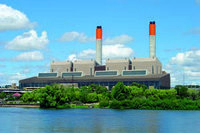
This country’s leadership tells us burning natural gas emits less greenhouse gases than other fossil fuels!
Going by Prime Minister Christopher Luxon’s quotes to the media, it’s a simple matter of exchanging natural gas for coal to solve our energy problems.
Really? It’s pretty marginal.
Is this the only solution to reach carbon zero?
He goes on... “The bottom line is, less gas means more coal,” he tells us and his Cabinet (Otago Daily Times 28/8/24).
“More coal means higher emissions because coal has around twice the carbon intensity of natural gas for the same amount of energy”.
This has led to Cabinet consents for the construction of facilities to import Liquefied Natural Gas (LNG) somewhere in this country. Also, to fast-track consents for local mining.
What brought this on was the regular shortage of electricity, mainly due to low lake levels for hydro generation during drought periods.
If this is the current administration’s simplistic remedy, then any hope of achieving carbon zero by 2030, or 2050 or even by 2100 will be a lost cause.
After all, natural gas is just another finite fossil fuel.
LNG is not to be confused with methane gas capture from landfills, food waste/septic tank systems and vegetative residues from crops. A couple of decades ago Invermay scientists were extracting methane for heating through a system of silos using vegetative residue – a system of bioremediation used elsewhere in the world.
And there has been a steady increase in boiler conversions among public institutions and businesses from coal to wood chip biomass ranging up to 20 megawatts (MW) of energy – mostly space heating.
Over the past few years of power shortages, we have been shy of some 500 MW of power, leading to potential cuts.
But thanks to Huntly Power Station’s coal-fired boilers we had been importing nearly half a million tonnes of coal from Indonesia per year.
What Luxon’s Cabinet needs to learn is that, apart from solar, wind and biofuel developments, our Crown Research Institutes (CRIs) have been researching forms of renewable energy. That is, until more recent funding cuts.
Last year, in an experiment using two of Huntly’s generators the company imported 1000 tonnes of torrefied wood pellets from Canada as a coal substitute.
And it worked to the company’s satisfaction. Scion Research had been doing research into torrefied wood pellets and estimated a plant could be set up to do the job here. Earlier this year, we learnt that Australia’s Foresta Group had applied to construct a plant in the Bay of Plenty to manufacture adequate supplies of torrefied wood pellets and chemicals - enough to feed a couple of boilers at Huntly as required without undue modification to the facilities.
The pellets are processed mostly from wood mill and skid site residues as well as low grade logs and stumps. A plant could be set up within a couple of years – about the same time as an LPG gas facility, and using our own renewable resources and...





